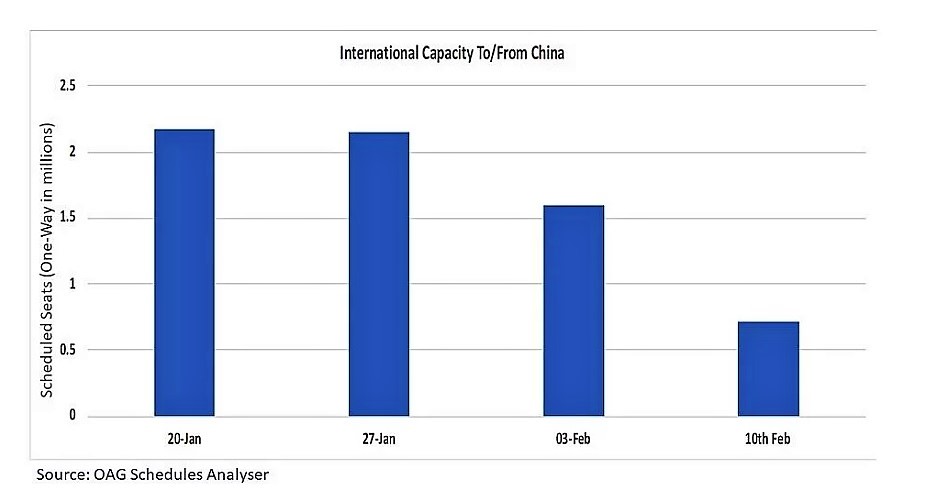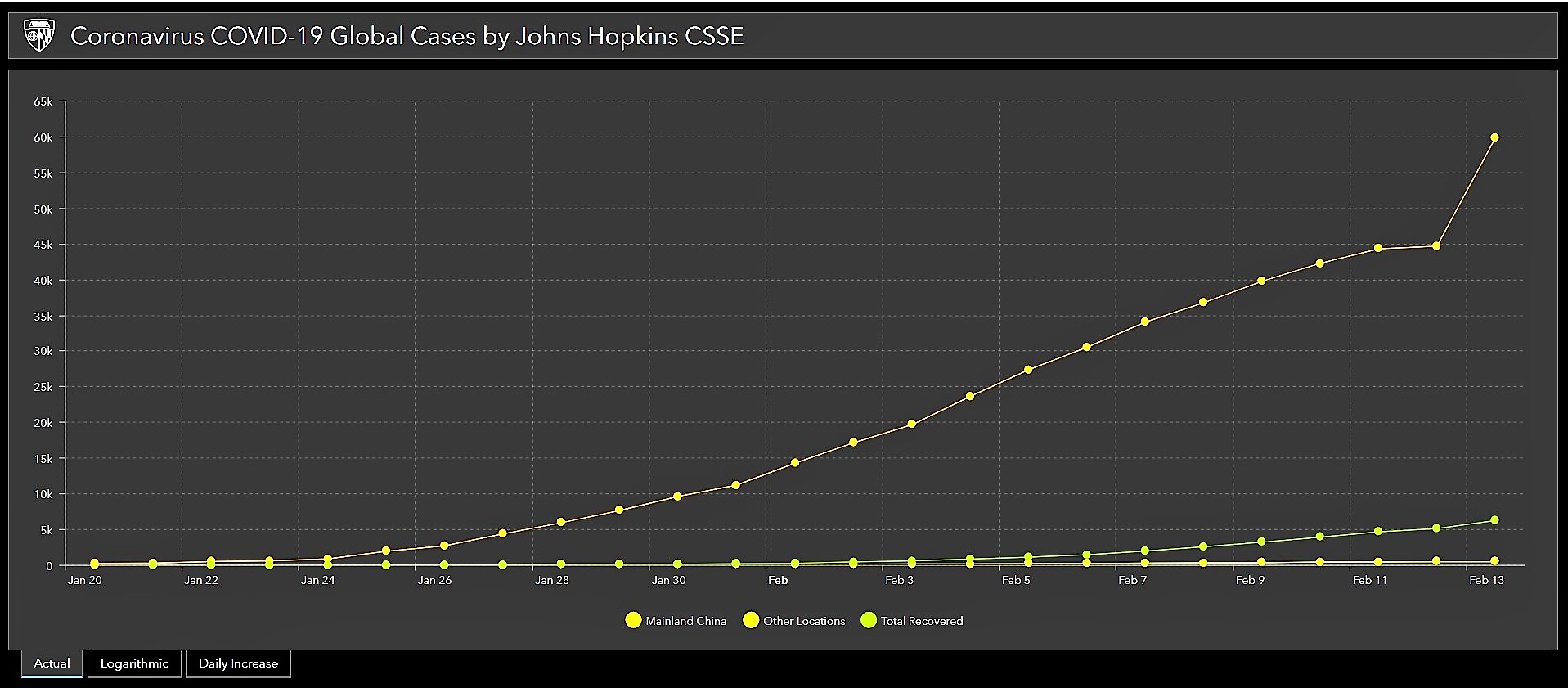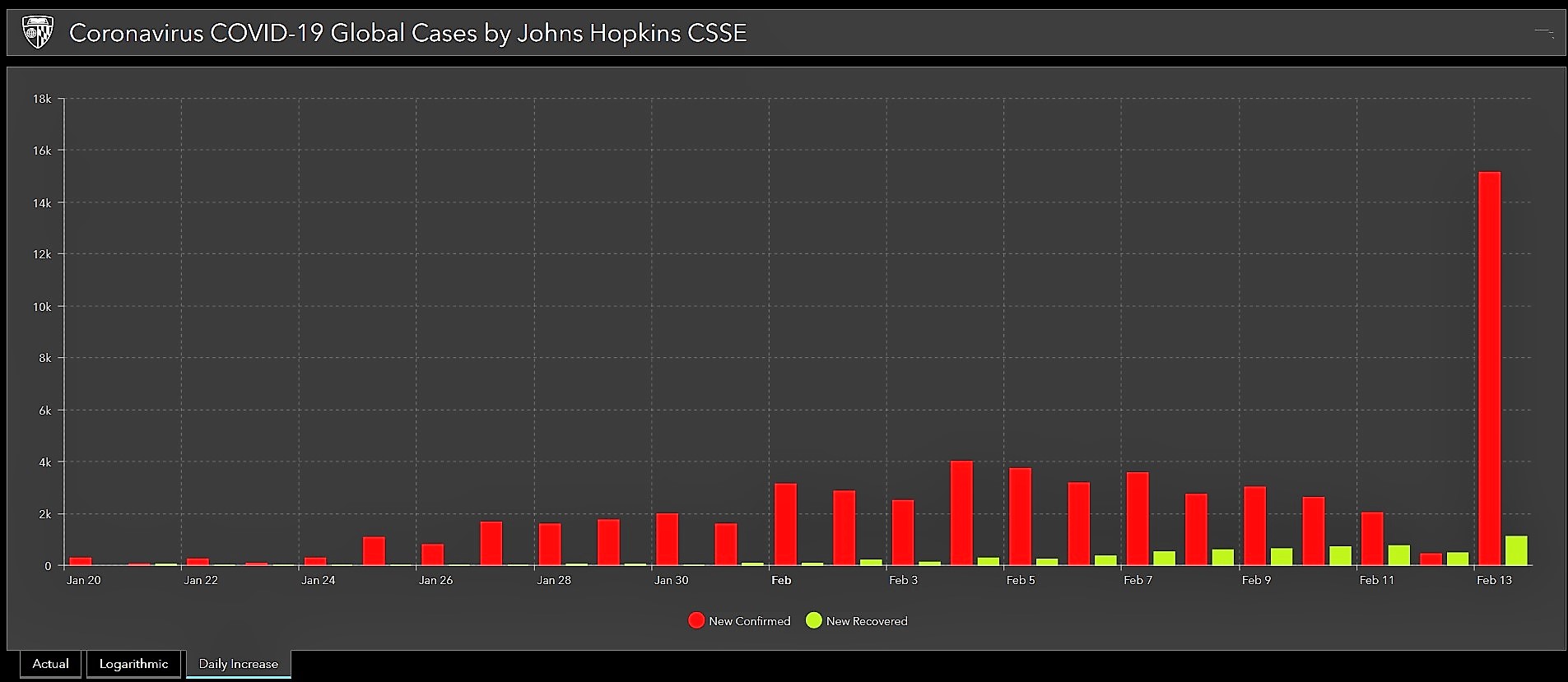COVID-HQ: Aviation Braced for a Turbulent First Quarter as Deaths from Virus Exceed 1,000 Victims
Kevin Rozario
February 14, 2020

Novel Coronavirus – now officially named COVID-19 by the World Health Organization (WHO) – sadly pushed past the 1,000 mark for fatalities earlier this week. By comparison SARS – also caused by a coronavirus – led to a total of 774 deaths in the 2002/03 outbreak. The current COVID-19 epidemic has spread alarmingly quickly through mainland China since it first appeared late last year in the city of Wuhan in Hubei Province. So far, a global pandemic has been avoided thanks to PRC government action to quarantine whole cities – and even regions – and by limiting travel. About 99% of cases have been contained within China, but with respiratory viral infections there is no absolute guarantee this will not change. On 20 January, the number of reported cases of COVID-19 (also known as 2019-nCoV) was just 282 but by 13 February more than 60,000 cases had been confirmed resulting in 1,370 deaths, all but three were in mainland China (source: Johns Hopkins University CSSE).  The impact on the aviation business has been both swift and dramatic, particularly as travel restrictions came into force during one of the busiest periods in the Chinese calendar: Lunar New Year. According to seat analyst, OAG, between January 20 and this week (February 10), the number of weekly international seats from China had fallen by about 1.4 million. Putting this in context, OAG Chief Analyst John Grant noted: “That reduction in capacity is more than all of the scheduled international capacity planned from France this week.” This stark revelation comes on the back of OAG figures the previous week which the organization described as “probably the most dramatic reduction in capacity we had ever seen in one market”. Asian Airports Suffer Most With two-thirds of international seats to and from China effectively wiped out, airports – particularly in Asia – are braced for a tough first quarter. The top seat volume markets that are hurting the most are Hong Kong (down -80.3%), Thailand (-63.0%), Taiwan (-62.7%), Japan (-60.1%) and South Korea (-54.4%) based on data from January 20 to February 10. But OAG believes that a turning point is close at hand. “Our expectation is that international capacity from China may again fall over the next few days but that we have seen the worst of the cuts, with airlines having responded quickly to the virus,” said Grant. Hopefully this will be the case – and that a bounce back will be swift. Data from IATA tracking RPKs during other major health crises (SARS in 2003, Avian Flu in 2005 and 2013, and MERS in 2015) show this to be true. Among these events SARS had the most serious negative impact on traffic, but there was an equally fast recovery. Nevertheless, according to IATA, Asia Pacific airlines lost 8% of annual RPKs and US$6 billion of revenue in 2003. A lot has changed since SARS At the time of SARS the Chinese only accounted for 50 million international passengers, but by 2018 their numbers had soared to 114 million. Meanwhile in the same period domestic Chinese traffic has grown from 138 million to a colossal 702 million (source: ICAO, IATA).
The impact on the aviation business has been both swift and dramatic, particularly as travel restrictions came into force during one of the busiest periods in the Chinese calendar: Lunar New Year. According to seat analyst, OAG, between January 20 and this week (February 10), the number of weekly international seats from China had fallen by about 1.4 million. Putting this in context, OAG Chief Analyst John Grant noted: “That reduction in capacity is more than all of the scheduled international capacity planned from France this week.” This stark revelation comes on the back of OAG figures the previous week which the organization described as “probably the most dramatic reduction in capacity we had ever seen in one market”. Asian Airports Suffer Most With two-thirds of international seats to and from China effectively wiped out, airports – particularly in Asia – are braced for a tough first quarter. The top seat volume markets that are hurting the most are Hong Kong (down -80.3%), Thailand (-63.0%), Taiwan (-62.7%), Japan (-60.1%) and South Korea (-54.4%) based on data from January 20 to February 10. But OAG believes that a turning point is close at hand. “Our expectation is that international capacity from China may again fall over the next few days but that we have seen the worst of the cuts, with airlines having responded quickly to the virus,” said Grant. Hopefully this will be the case – and that a bounce back will be swift. Data from IATA tracking RPKs during other major health crises (SARS in 2003, Avian Flu in 2005 and 2013, and MERS in 2015) show this to be true. Among these events SARS had the most serious negative impact on traffic, but there was an equally fast recovery. Nevertheless, according to IATA, Asia Pacific airlines lost 8% of annual RPKs and US$6 billion of revenue in 2003. A lot has changed since SARS At the time of SARS the Chinese only accounted for 50 million international passengers, but by 2018 their numbers had soared to 114 million. Meanwhile in the same period domestic Chinese traffic has grown from 138 million to a colossal 702 million (source: ICAO, IATA).  The impact of a Chinese-centred coronavirus epidemic is therefore many times greater today. ICAO has forecast 16.4 million to 19.6 million fewer Chinese passengers in 1Q 2020 which will lead to potential revenue losses of between US$4.1 billion and US$4.9 billion in the period (based on an average fare of US$250). The Chinese also spend the most on tourism at US$277 billion, accounting for 20% of global receipts (source: UNWTO). This is almost double American spending of US$144 billion (in second place). Markets that will pay the heaviest price (excluding Taiwan and Chinas Special Administrative Regions of Hong Kong and Macao) will be Thailand and Japan, but major international hubs in the US (west coast mainly), France and Australia will all see impacts. Until today (Thursday) there were signs that rates of infection were decelerating which would have come as a relief to residents of Hubei Province who have suffered 95.8% of all deaths from COVID-19. However, a change in how the disease is being measured in China caused a +33.5% jump on Thursday. Even with this statistical adjustment, cases outside mainland China remain low (currently 527, a 0.9% share) – so there is still hope that a global pandemic can be avoided.
The impact of a Chinese-centred coronavirus epidemic is therefore many times greater today. ICAO has forecast 16.4 million to 19.6 million fewer Chinese passengers in 1Q 2020 which will lead to potential revenue losses of between US$4.1 billion and US$4.9 billion in the period (based on an average fare of US$250). The Chinese also spend the most on tourism at US$277 billion, accounting for 20% of global receipts (source: UNWTO). This is almost double American spending of US$144 billion (in second place). Markets that will pay the heaviest price (excluding Taiwan and Chinas Special Administrative Regions of Hong Kong and Macao) will be Thailand and Japan, but major international hubs in the US (west coast mainly), France and Australia will all see impacts. Until today (Thursday) there were signs that rates of infection were decelerating which would have come as a relief to residents of Hubei Province who have suffered 95.8% of all deaths from COVID-19. However, a change in how the disease is being measured in China caused a +33.5% jump on Thursday. Even with this statistical adjustment, cases outside mainland China remain low (currently 527, a 0.9% share) – so there is still hope that a global pandemic can be avoided. 


